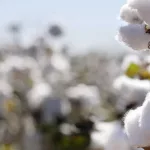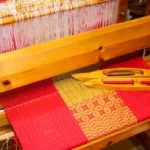India to face cotton shortage
Coimbatore: 28th February 2022
The predominantly cotton based Indian textiles and clothing industry provides jobs to over 105 million people across the country especially for the people below the poverty line, rural masses & women folks including 6.5 million cotton farmers by consuming over 85% of the cotton produced in the country. Cotton being an agricultural and seasonal commodity, over 90% of the cotton arrives the market during December to March every cotton season. Owing to working capital constraint and high cost of funding, the spinning mills normally maintain two to three months’ stock after the season and procure the balance cotton from open market during July to October. The country has been so far producing surplus cotton and exporting the same to different countries, especially Bangladesh. But during the current season, owing to substantial increase in demand and export of around 50 lakh bales, the country is likely to face 30 to 40 lakh bales cotton shortage.
The unprecedented increase in domestic cotton price from the level of Rs.135 per kg (Feb 2021) to Rs.219 per kg (Feb 2022) in one year, an increase of around 65%, is greatly affecting the exporters to meet their export commitments. The levy of 11% import duty (5% BCD, 5% AIDC & 10% Social Welfare Surcharge on both) has aggravated the cotton market in India. As the seed cotton price (kapas) is ruling around 70% higher than the Minimum Support Price, the farmers, ginners and traders are hoarding the cotton hoping for further increase in prices. The cotton arrival has drastically reduced to around 220 lakh bales during February 2022 as against around 293 lakh bales arrived during the same period last year. Out of 220 lakh bales arrived in the market, around 150 lakh bales have been consumed by the mills, 30 lakh bales have been contracted for exports, 15 to 20 lakh bales are in the pipeline and around 20 lakh bales are with the trade and ginners. Hence, the spinning mills are having one to two months stock only, as against the normal stock of three to six months during February.
The steep increase in cotton price on a daily basis is seriously affecting the exporters, who have three to four months’ export contract with committed price. Few traders are intensively using MCX and NCDEX cotton futures to speculate the prices by creating artificial scarcity. Therefore, the entire industry is heading towards a crisis during the off season.

Mr. Ravi Sam
At the Press Meet held today at SIMA premises, Mr. Ravi Sam, Chairman, The Southern India Mills’ Association (SIMA) has appealed to the Hon’ble Prime Minister for his immediate intervention on cotton policies and take appropriate steps to avoid stoppage of production and job losses and enable the exporters to meet their export commitment during the off season. He has stated that owing to around 7.2% reduction in cotton area and crop damage in certain cotton growing States due to excessive rain, the cotton crop size for the cotton season 2021-22 would be less than 350 lakh bales as against the industries’ requirement of 360 lakh bales. Mr. Ravi Sam has said that the spinning sector that could not modernize over 35% of the spinning capacity due to long drawn recession during the last 15 years has now started making investments in modernization, capacity expansion and greenfield projects. He has said that around two lakh spindles capacity is being added every month in the country and this is likely to continue in the coming years if a conducive environment is created.
Mr. Ravi Sam has stated that cotton yarn, fabrics and made-ups exports during the period April 2020 to January 2021 has increased from US $ 7775 million to US $ 12,681 million during April 2021 to January 2022, an increase of 63%. He has added that despite tariff barriers and cutthroat competition from the LDC / PTA countries, the readymade garment exports have increased from US $ 9,498 million to US $ 12,669 million during the same period, an increase of 33%. SIMA Chairman has stated that the accelerated growth in the cotton textile industry has increased the cotton consumption by 10% to 15% during the current cotton season and the industry requirement is likely to reach 360 lakh bales surpassing the crop size for the first time in the history and would make the country a cotton deficit one. He has added that around 25% of the cotton plucked during the earlier and later parts of the seasons would be of inferior quality and cannot be used for the manufacture of export and high value-added textile products.
Mr. Ravi Sam has stated that with the estimates of 75 lakh bales opening stock, 350 lakh bales crop size, 12 lakh bales imports, the cotton supply for the season would be 437 lakhs bales. He has further stated that with the estimates of 360 lakhs bales cotton consumption, 50 lakhs bales cotton export (over 30 lakhs bales are already contracted for export), the closing stock would be only 27 lakhs bales creating a shortage of 40 lakhs bales of good quality cotton to meet the industry demand and sustain its growth rate. SIMA Chairman has stated that the Government is actively considering exempting Extra Long Stable (ELS) cotton (32.5 mm and above) from import duty that is not produced in the country as the same will not have any impact on the farmers. While appreciating this move, SIMA Chairman has appealed to allow duty-free import of 40 lakh bales of cotton to avoid stoppage of production and job losses due to cotton shortage during the end of the season. Mr. Ravi Sam has stated that during 2010-11 season the Empowered Group of Ministers had recommended that the closing stock should be at least 2 ½ months of mills’ consumption when the country faced similar crisis. He has pointed out that the Association would not recommend any restriction or ban on exports. But allowing required quantity of duty-free import of cotton based on the supply and demand situation is essential to avoid production stoppage, grab the emerging market opportunities and double the textile business size as envisaged by the Hon’ble Prime Minister says Mr. Ravi Sam.
SIMA Chief has also appealed Hon’ble PM to implement the Technology Mission on Cotton 2.0 (TMC 2.0) to remain as a cotton surplus country in the world as already recommended by the Ministry of Textiles with adequate funds with four Mini Missions viz., i) Technology Development, ii) Technology Transfer, iii) Clean Cotton and iv) Branding Indian cotton and its textile products. He has stated that Indian cotton productivity had increased from 275 kgs per hectare to 585 kgs per hectare taking advantage of the TMC 1.0 and Bt technology acquired by the country. He has also stated that as the TMC 1.0 was closed during 2012 and the license for Bt cotton technology also expired in 2013 and thereafter the cotton productivity has started declining and ranging between 460 and 500 kgs per hectare during the last several years. Mr. Ravi Sam has pointed out that Brazil that was in similar position during the beginning of 2000 is now achieving around 1800 kgs per hectare of cotton yield. He has stressed that TMC 2.0 alone can benefit both the farmers and the industry and stated that the productivity will not only benefit over 6.5 million existing cotton farmers but will increase the area under cotton and thereby benefitting several lakhs of new farmers and also creating new jobs for over 20 million people when the textile business size reaches US $ 350 billion from the current level of US $ 162 billion.






